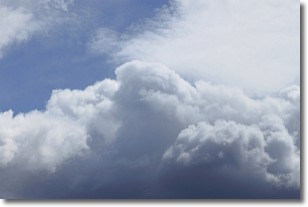Weather Alert in California
Special Weather Statement issued July 30 at 2:39PM PDT by NWS Los Angeles/Oxnard CA
AREAS AFFECTED: Catalina and Santa Barbara Islands; San Luis Obispo County Beaches; Santa Barbara County Central Coast Beaches; Santa Barbara County Southwestern Coast; Santa Barbara County Southeastern Coast; Ventura County Beaches; Malibu Coast; Los Angeles County Beaches
DESCRIPTION: ...ALL TSUNAMI ADVISORIES HAVE BEEN CANCELLED... * UPDATES... All Tsunami Advisories have been cancelled. However, tidal fluctuations and enhanced currents will continue for the next few days. * LOCAL IMPACTS... While the tsunami is expected to remain below advisory criteria, strong currents will pose a risk for ocean swimmers. * RECOMMENDED ACTIONS... If you are located in this coastal area, check in with local lifeguards before entering the water. Be alert to instructions from your local emergency officials. * OBSERVED TSUNAMI WAVE HEIGHTS FROM EARLIER... Port San Luis California 2.7 ft at 0214 AM PDT on Jul 30 Santa Barbara California 1.5 ft at 0706 AM PDT on Jul 30 Santa Monica California 1.2 ft at 0827 AM PDT on Jul 30 Los Angeles Harbor CA 0.5 ft at 0546 AM PDT on Jul 30 This will be the final statement issued for the local area for this event.
INSTRUCTION: N/A
Want more detail? Get the Complete 7 Day and Night Detailed Forecast!
Current U.S. National Radar--Current
The Current National Weather Radar is shown below with a UTC Time (subtract 5 hours from UTC to get Eastern Time).

National Weather Forecast--Current
The Current National Weather Forecast and National Weather Map are shown below.

National Weather Forecast for Tomorrow
Tomorrow National Weather Forecast and Tomorrow National Weather Map are show below.

North America Water Vapor (Moisture)
This map shows recent moisture content over North America. Bright and colored areas show high moisture (ie, clouds); brown indicates very little moisture present; black indicates no moisture.

Weather Topic: What are Nimbostratus Clouds?
Home - Education - Cloud Types - Nimbostratus Clouds
 Next Topic: Precipitation
Next Topic: Precipitation
A nimbostratus cloud is similar to a stratus cloud in its formless,
smooth appearance. However, a nimbostratus cloud is darker than a stratus cloud,
because it is thicker.
Unlike a stratus cloud, a nimbostratus cloud typically brings with it the threat
of moderate to heavy precipitation. In some cases, the precipitation may evaporate
before reaching the ground, a phenomenon known as virga.
Next Topic: Precipitation
Weather Topic: What is Rain?
Home - Education - Precipitation - Rain
 Next Topic: Shelf Clouds
Next Topic: Shelf Clouds
Precipitation in the form of water droplets is called rain.
Rain generally has a tendency to fall with less intensity over a greater period
of time, and when rainfall is more severe it is usually less sustained.
Rain is the most common form of precipitation and happens with greater frequency
depending on the season and regional influences. Cities have been shown to have
an observable effect on rainfall, due to an effect called the urban heat island.
Compared to upwind, monthly rainfall between twenty and forty miles downwind of
cities is 30% greater.
Next Topic: Shelf Clouds
Current conditions powered by WeatherAPI.com




